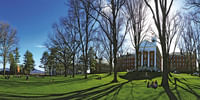By strengthening their observational drawing skills and recognition of the complexities and continual rearrangement of design elements (i.e. line, shape, rhythm, color, space, volume, etc.), students will be better able to critically understand the visual structure of objects and scenes, particularly in works of art. Students will be introduced to a wide array of materials and methods. These will include traditional and historical practices as well as those more contemporary and innovative. Special attention will be paid to safe and environmentally responsible practices.
Through these studies, students will be able to engage, and more fully understand, the principals and precepts that guide others while producing their own works of art. This visual intelligence will lead to an enhanced practice of solving problems that arise in the making of their own works. Students will then be better able to place their work, and the works of others, into a larger community context. In turn, this will re-enforce the communicative power and purpose of making art. With a more nuanced, measured, and interpretive understanding of art forms, students will mature into better critics and practitioners whether in the fine arts or applied fields.









